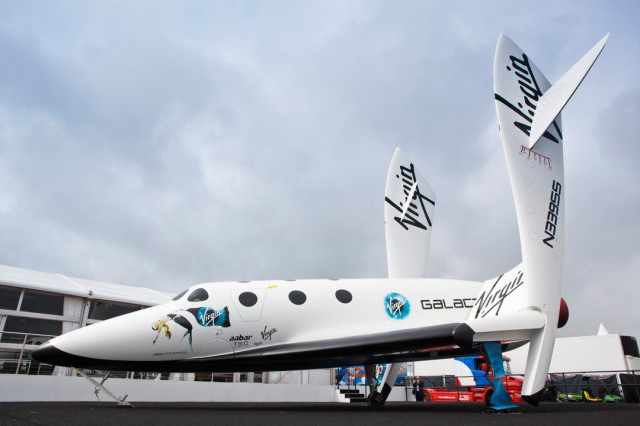
The Guardian has a good summary of how things are proceeding with the two-day-old National Transportation Safety Board (NTSB) investigation into the destruction of Virgin Galactic’s SpaceShipTwo, which occurred at approximately 10:12am PDT on October 31. Some eyewitnesses reported seeing an explosion when the craft broke up, prompting speculation that the accident had something to do with SpaceShipTwo’s hybrid rocket engine—an engine that was making its first flight with its new fuel.
However, at a press conference Sunday afternoon, acting NTSB chairman Christopher Hart said that crash investigators had already located the cause of the accident that injured 43-year old pilot Peter Siebold and took the life of 39-year old co-pilot Michael Alsbury: the spacecraft’s "feathering" mode had been engaged early. This put SpaceShipTwo in a high-drag configuration unsuitable for powered flight, and the craft then broke apart.
The feathering functionality is designed to be used in the later stage of SpaceShipTwo’s flight. It changes the shape of the craft, swinging its wings upward and allowing them to move to the optimum angle to slow the craft down on descent, like a shuttlecock falling to the ground in a game of badminton.

"The feathers moved into the deployed configuration and two seconds after that, we saw disintegration," explained Hart. Engaging the feathers involves a two-step process; according to Hart, the second of the two steps engaged "without being commanded."
As to eyewitness reports of an "explosion," Hart pointed out that the NTSB had recovered SpaceShipTwo’s intact fuel and oxidizer tanks, along with its rocket motor. None showed any signs of burn-through or other evidence that an explosion had occurred. The loss of SpaceShipTwo appears to have been wholly due to the unplanned change in the vehicle’s configuration, not to the hybrid engine.
Determining the "how" of a craft’s destruction is often relatively easy compared to determining the "why," and it is that latter task that will occupy the NTSB’s attention.
"We’ll be looking at training issues," said Hart. "We’ll be looking at 'was there pressure to continue testing?' We’ll be looking at safety culture. We’ll be looking at the design, the procedures—we’ve got many, many issues to look into much more extensively before we can determine the cause."
Pressure to proceed and faulty safety cultures have plagued manned space flight since the beginning, at every government space agency that launched people into orbit. The first astronauts to lose their lives to time pressure and a failure to adequately manage risk were Gus Grissom, Ed White, and Roger Chaffee in the Apollo 1 fire in 1967; the fire’s technical cause (likely a spark from frayed wiring in a high-pressure oxygen environment) is secondary to its root causes of contractors being forced to work too quickly. Similarly, both the Challenger and Columbia disasters could trace their ultimate causes back to what has been derisively known since the early days of space flight as "Go Fever."
The NTSB will now have to determine whether the same types of cultural and managerial issues that doomed seventeen astronauts also played a role in the death of SpaceShipTwo’s co-pilot.
reader comments
141